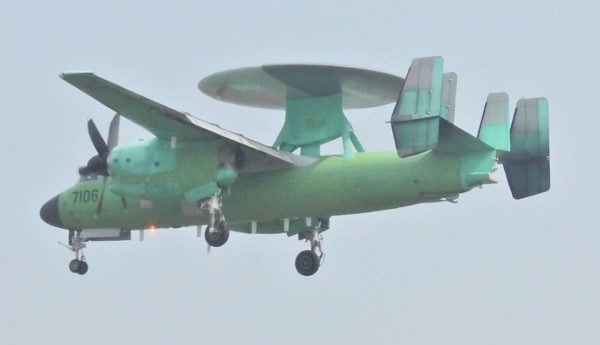In March 2024, images revealed on the Chinese social media platform Weibo shed light on the KJ-600, China’s next-generation Airborne Early Warning (AEW) aircraft, intended for deployment from the aircraft carriers of the People’s Liberation Army Navy (PLAN). Inspired by the advanced capabilities of the US Navy’s E-2 Hawkeye, the KJ-600 marks a significant step in China’s naval ambitions, offering round-the-clock airborne surveillance, and command and control capabilities.

Developed by the Xi’an Aircraft Company, the KJ-600 project began flight trials in the fall of 2020. Equipped with turboprop engines, the aircraft features a robust design with a spacious fuselage capable of accommodating a team of four to six members, essential for prolonged surveillance and command missions. The most striking feature of the KJ-600 is its large dorsal radome, likely housing a state-of-the-art Active Electronically Scanned Array (AESA) radar system.
The unveiled images show the aircraft in a gray color scheme, featuring a straight high-wing configuration, a four-fin tail, and a tricycle landing gear – characteristics that underscore China’s ambitions to enhance its maritime surveillance and airborne command capabilities. Despite significant advancements in flight tests, crucial catapult launch and arrested recovery trials for carrier-based operations have not yet been visually confirmed.
According to satellite image analysis, the KJ-600 has a wingspan of 24.4 meters and a length of 18.4 meters, dimensions that testify to its compact design and ability to operate effectively from aircraft carriers. Reports from late 2023 on “intensive testing” involving four to six prototypes indicate that the KJ-600 development program is in an advanced phase, potentially approaching low-rate initial production.
